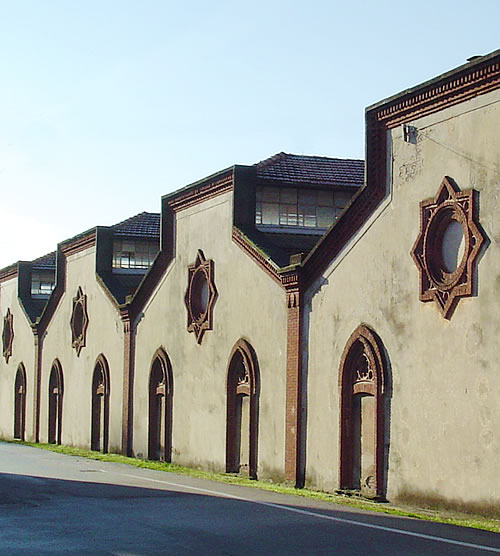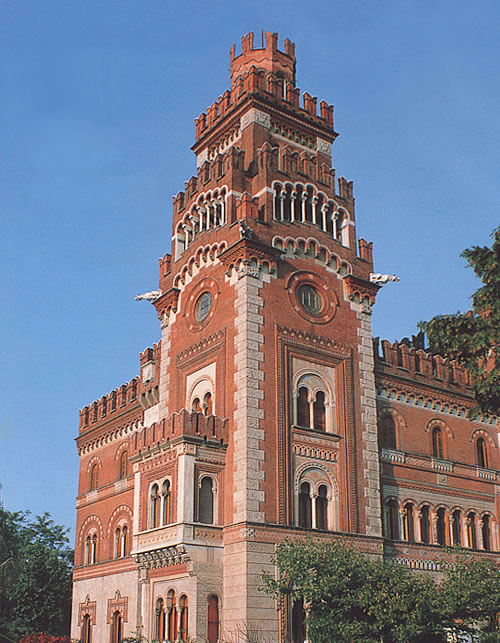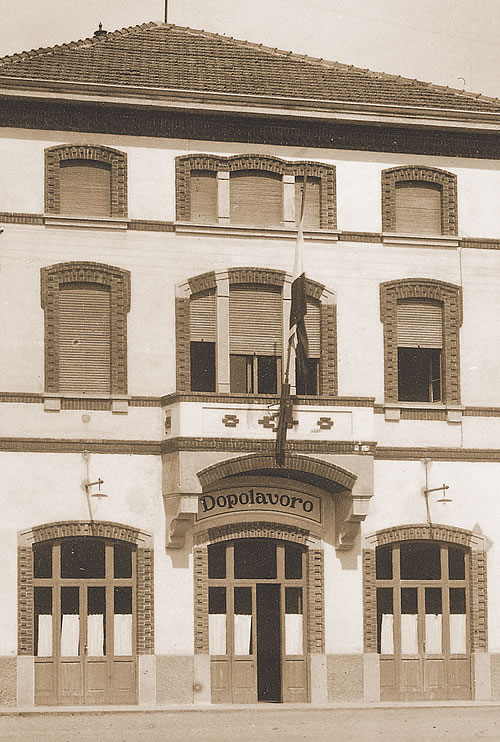Main Sights
The Crespi Village was effectively a complete and self-sufficient microcosm. The workers, together with their families, could find here everything they needed, in an epoch when the state was not ready to provide all the necessary protection and services; society was deeply changed by industrialisation.

Main entrance
The main entrance of the factory is the most memorable image of Crespi. It has a similar presence to that of a cathedral, where the chimney, the directors' offices and the wrought iron gate create a superb architectural composition, which became symbol of industrial architecture from the late 1800s.

Factory's sheds
The factory of Crespi has got only one floor and it is characterized by decorations made of terra cotta and bricks. The factory's sheds are repeated in a fascinating row along the main street.

Owner's villa
The villa of the Crespis reminds of an imposing medieval castle: a symbol of the master's presence. The castle illustrates the feudal hierarchy within the village, where the master governs from his castle over his modern industrial development: over his factory, his village and his workers.

Workers' Houses
The series of cottages lined up in order represent the most typical image of Crespi, at the very heart of the Village. These cottages look simple but pleasant and were conceived as a modern solution for workers' houses. Son of the founder, Silvio Crespi was inspired by the examples of workers' houses that he saw during his journeys in England.

Villas
The workers' houses are not the only kind of dwelling in the Village. During the twenties, the Crespi's decided to build some villas with an eclectic style. These villas are beautiful, elegant and capricious, and were assigned to the directors and clerks.

Church
The church of Crespi d'Adda is the exact copy of the Renaissance church (school of Bramante) in Busto Arsizio. The Crespi family - who came from Busto Arsizio - wanted to recreate the same temple in their Village, as a reminder of their own town and of the Italian Renaissance.

School
The school was intended to be both a useful service for the growing population and a means for preparing future workers. The pupils were not only taught about reading and writing at school, but they were also taught the skills that were required to be a worker.

Community Centre
The Community centre was created for leisure and cultural activities. The workers could meet here after hard work in the factory. The centre included also a library and a bowling lawn.

Wash House
The wash house allowed the washer-women to wash their clothes near the houses, avoiding a long walk to the river carrying heavy baskets full of clothes.
Cemetery
The cemetery of Crespi lays at the end of the main street. It is characterised by the Crespi chapel - a decorated tower-pyramid of exotic taste and eclectic style, which is the tomb of the Crespi family. The monument rises to embrace the workers' graves: small crosses disposed in order in the meadow.


